2023.08.01.62
Files > Volume 8 > Vol 8 No 1 2023
Israa N.Al-Asady1, Mohammed Arafat Mohammed2, Younis Saadi Saeed3, Bahaa Abdullah Laftaah AL-Rubaii4*
1,2,3 Department of Biology, College of Education for Pure Sciences, University of Mosul, Mosul, IRAQ.
4Department of Biology, College of Science, University of Baghdad, Baghdad, IRAQ.
*Corresponding authors: [email protected], https://orcid.org/0000-0003-4546-1815, Mobile:+9647709780888
Available from: http://dx.doi.org/10.21931/RB/2023.08.01.62
ABSTRACT
The research deals with anaerobic fermentation and creating the conditions for bacteria (Methanogens) to carry out the process of hydration, acidification and production of methane gas. The study included the design of an anaerobic reactor made of thick glass (12) mm, with dimensions (of 35 x 35 x 35) cm, with a thermal heater inside it and a temperature set at (45) ℃, and then filled with Dairy wastewater. The Treatment period of the reactor reached two months, during which water samples were taken (72hrc) for laboratory tests (pH, COD). The laboratory tests began on 1/1/2021 and ended on 1/3/2021. COD removal of 87.12% was achieved with a neutral pH at the beginning of the second month of treatment. Biogas was obtained in this anaerobic reactor by fermentation and in the presence of bacteria (Methanogens), and its amount during the treatment period was 1.6 m3.
Keywords: Bioenergy, Dairy waste Water, anaerobic reactor, Fermentation, bacteria (Methanogens)
INTRODUCTION
Biological reactors are characterized by their high efficiency and lower cost than physical, chemical and hybrid (physical and chemical) reactors. They are more environmentally friendly, Biological reactors are classified into (anaerobic and aerobic), and our research was limited to using anaerobic reactors to obtain biofuels and produce energy. Anaerobic biological reactors occur in closed reactors, without oxygen, and at a relatively high temperature of 45 C°1.
The anaerobic fermentation process occurs in the absence of oxygen by fermentative bacteria in several environments where the oxygen concentration is non-existent or very low. Biological, and one of its essential components is methane2. The product of the anaerobic fermentation process is methane gas, which is responsible for its formation by bacteria (Methanogens) or which are called methane generators; and this type of bacteria is obligatory anaerobic produces vital methane gas by their metabolic processes, and anaerobic fermentation processes stop when the activity of bacteria (Methanogens) stops3. Among the most important factors affecting the anaerobic fermentation process, according to to4 are:(Temperature, pH, COD, BOD, TDS, TSS, EC, HRT, SRT, Alkalinity, Nutrient concentration, Toxic Substances Ratio). Biogas is characterized by colorlessness, is lighter than air, and has an unpleasant odor because it contains sulfur gas. The amount of methane gas in it may reach (70%), and the rest of the components are carbon dioxide and other gases in small quantities and vary according to the analyzed microorganisms. The production of Biogas depends on the mass of Organic solids and their biological activity in anaerobic reactors5. Biogas is used in many fields, such as its use in large reactors as fuel for heaters, use in electricity generation, in internal combustion engines, and powering air blowers6
MATERIALS AND METHODS
Reactor design
During this research, a laboratory anaerobic reactor with dimensions (35 x 35 x 35) cm and a thermal heater set to 45 degrees Celsius was designed and implemented. The laboratory reactor's architecture included thick glass, which minimized heat loss to the surroundings around it (10 mm). From the front of the reactor is an opening for taking samples for laboratory analysis. From the bottom of the reactor is a space for unloading and cleaning. The outlet for the Biogas is located at the very top of the reactor and is connected to a rubber tube with a manometer mounted on a hand-crafted wooden board. In order to enhance the anaerobic activities of the bacteria (Methanogens) required for the fermentation process and the creation of Biogas, the reactor contained a mixer that rotated at a speed of forty revolutions per minute (rpm). Figure 1 presents a visual representation of the anaerobic reactor.
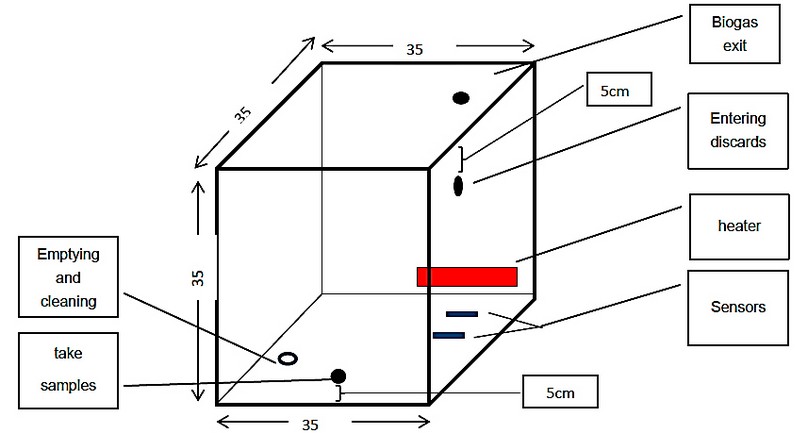
Figure 1. Anaerobic Reactor (By athours)
The reactor was equipped with an on and off switch for the muffler and a second switch to turn on and off the convector and connected it to the control panel and was equipped with an electrical system to ensure continuity of operation; figure (1) shows the anaerobic reactor used in this study. In this study, samples were taken from the liquid dairy industry, especially the cheese industry, because it contains a high organic load and a high relative temperature, and the fermentation process occurs without the need for activated sludge. Thus it is a suitable medium for bacteria (Methanogens) to carry out their anaerobic activities, knowing that the liquid wastes for the dairy industry were taken from the National Dairy Factory. The total capacity of the anaerobic reactor was (42.875 liters). In comparison, the operating capacity was (20 liters) to collect Biogas and ensure smooth circulation of the mixture during the operational period.
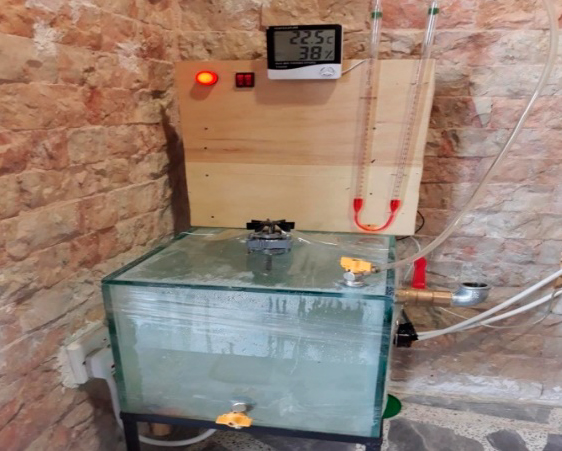
Figure 2. Anaerobic reactor
RESULTS
The qualitative characteristics of liquid waste
Before starting the treatment process and biogas production, the values of chemical and physical laboratory tests were relatively high. They had a high organic load, and Table (1) shows the results of laboratory tests before starting the treatment process and after treatment.
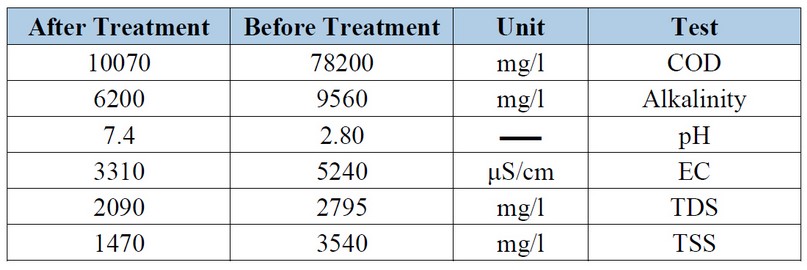
Table 1. Characteristics of the raw liquid wastes for the manufacture of cheese before and after treatment completion.
Chemical Oxygen Demand (COD)
The nature of the liquid wastes for the dairy industry is of high organic load and high temperature. Therefore, organisms and bacteria will consume oxygen, which leads to a high value of (COD)7 . In the first days of anaerobic treatment, there was no removal of the chemical oxygen requirement, as this period is considered the stage of acclimatization and adaptation for microorganisms and anaerobic bacteria8, And then there was a removal of (COD) in the anaerobic reactor and the removal continued to increase, and this is due to the appropriate conditions and sufficient time for the anaerobic bacteria to analyze and dismantle the substances and compounds present in the excreted water and turn them into acids and intermediate compounds, and then the methane-producing bacteria convert the acids and products of the compounds intermediate to methane4. After the completion of the treatment process, which reached two months, we obtained a good removal of (COD) with a percentage of (87.12%), as well as the value of (COD) after treatment (10070 mg/L). The value of the(COD) began to be relatively stable at the beginning of the third week of treatment, coinciding with the beginning of the fermentation process. The color of the liquid excretions turned brown, and there was a slight rise in the manometer scale as shown in Table (2), and figure (3) shows the process of fermentation and transformation to brown.
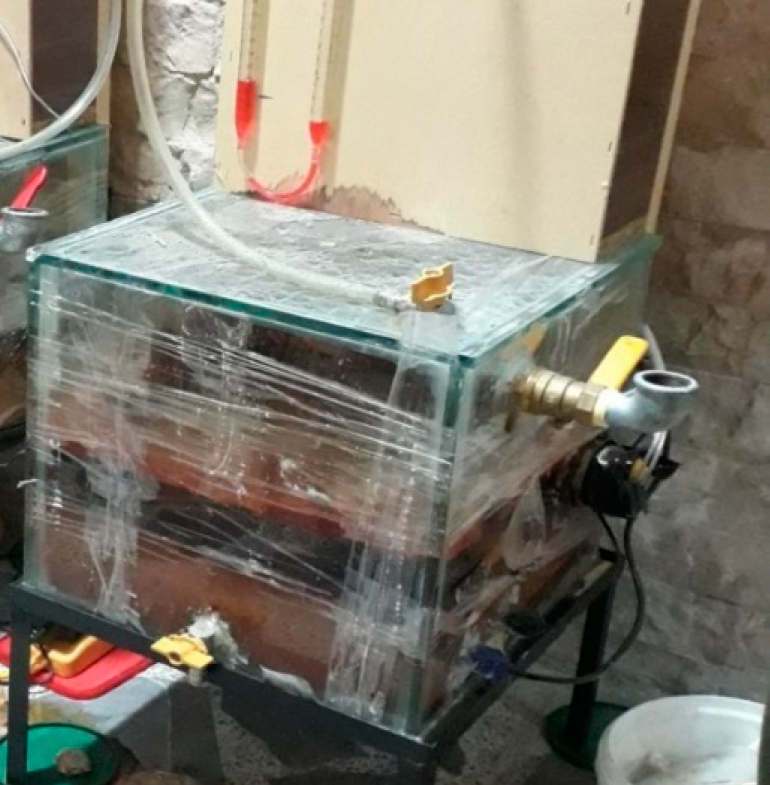
Figure 3. The fermentation process
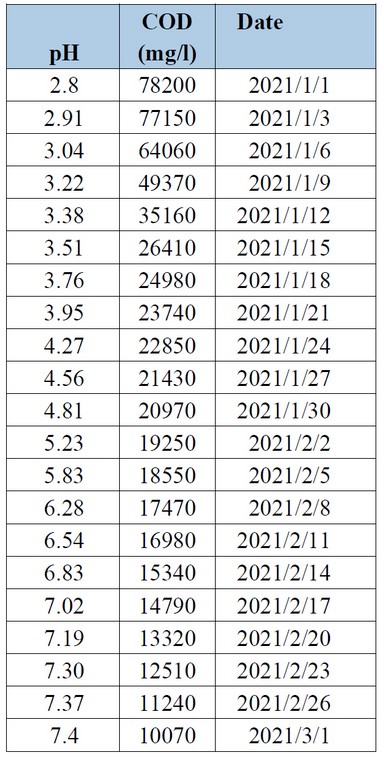
Table 2. Shows the results of the test readings (COD) and the (pH).
Acidity (pH)
The value of the acidity of the liquid wastes of the National Dairy Factory was low. Its value before treatment was (2.8), and this is due to the use of detergents (nitric acid and soda), in addition to the increase in acidity due to the breakdown of dairy lactose and its transformation into lactic acid9,10. The value of the acidity after the completion of digestion reached neutral, and this is due to the phase of methane gas formation, which causes a reduction of the concentration of organic acids. Therefore, the acidity (pH) value rises, as indicated by 11, and Table (2) shows the importance of the acidity function during digestion.
biogas production
Biogas is one of the most important products of the anaerobic digestion process carried out by bacteria and microorganisms, the most important of which are bacteria (Methanogens), which are controlled in closed anaerobic reactors. Biological gases consist of methane at a rate of (50-70%), carbon dioxide and other gases at a rate of (20-40%), and other gases are in small quantities, namely (hydrogen, nitrogen, hydrogen sulfide, carbon monoxide, ammonia, and others5.Biogas was obtained in the anaerobic reactor from the anaerobic digestion process, and the color of the liquid wastes was clear from white to dark brown, and Table (3) shows the manometer readings for biogas production during the operational period of the anaerobic reactor
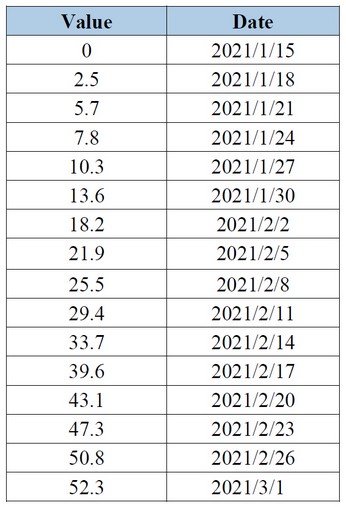
Table 3. Manometer readings in centimeters for biogas production in the anaerobic reactor
The total amount of Biogas produced by the reactor during the operational period was (401.7 cm), which is equal to (1.6 m3). From the information obtained from 12, one cubic meter of Biogas produces electrical energy of (1.25 kilowatt/hour).The amount of electrical energy produced
2 kilowatt/hours = 1.6 * 1.25. Also12 indicates that the proportion of methane gas constitutes 70% of the Biogas. Volume of methane gas produced 1.6 x 0.7 = 1.12 m3
CONCLUSIONS
it is possible to benefit by reusing industrial wastewater that contains a high organic load and converting it into energy using anaerobic reactors, thus reducing the pollutants presented to the environment. The increase in the value of the acidity (pH) and it's reaching the neutralization value is evidence of the success of the performance of the anaerobic reactor, Biogas, which can be used as fuel or converted into electrical energy, was produced. Biogas production reached (1.6 m3), and electrical energy production amounted to (2 kilowatts/hours). The results showed that the anaerobic reactor has good efficiency and achieved a COD removal of (87.12%). The treatment reactor achieved a TDS removal rate of (25.22%). The percentage of TSS removal in the anaerobic reactor during the operating period was (58.47%).
Funding: Self-Funding.
Acknowledgments:
Conflicts of Interest: The authors declare no conflict of interest.
REFERENCES
1. Amin Goli, Ahmad Shamiri, Susan Khosroyar, Amirreza Talaiekhozani, Reza Sanaye, Kourosh Azizi,. A Review on Different Aerobic and Anaerobic Treatment Methods in Dairy Industry Wastewater. Journal of Environmental Treatment Techniques. 2019 ; 6(1):113-141 .
2. Dawood Salman D, Qasim Turki W, Riad Khudhaier. Comparison between the presence and absence of mixing in the anaerobic bio S logical treatment of liquid waste for the cheese industry. Revis Bionatura 2022;7(2) 41. http://dx.doi.org/10.21931/RB/2022.07.02.41.
3. Hendrickson EL, Leigh JA. Roles of coenzyme F420-reducing hydrogenases and hydrogen-and F420-dependent methylenetetrahydromethanopterin dehydrogenases in reduction of F420 and production of hydrogen during methanogenesis. Journal of bacteriology. 2008 ;190(14):4818-21.
4. Dennis, A. and Burke, P.E. (2001) Dairy Waste Anaerobic Digestion Handbook. Environmental Energy Company, Olympia.
5. Uzodinma, E.O.; Ofoefule, A.U.; Eze, JI; Mbaeyi, I.; Onwuka, N.D. Effect of some organic wastes on the biogas yield from carbonated soft drink sludge. Sci. Res. Essays 2008, 3, 401–405.
6. Regattieri A, Bortolini M, Ferrari E, Gamberi M, Piana F. Biogas micro-production from human organic waste—A research proposal. Sustainability. 2018; 10(2):330.
7. Massah M, Mirbagheri SA. Dairy Factory Wastewater from Cumulative Point of View-A Case Study. Environment and Pollution. 2013;2(1):96-102.
8. Ghangrekar MM, Shinde VB. Microbial fuel cell: a new approach of wastewater treatment with power generation. InInternational Workshop on R&D Frontiers in Water and Wastewater Management. Nagpur, India .2006; 20: 20-21.
9. Gil-Pulido B, Tarpey E, Almeida EL, Finnegan W, Zhan X, Dobson AD, O'Leary N. Evaluation of dairy processing wastewater biotreatment in an IASBR system: Aeration rate impacts on performance and microbial ecology. Biotechnology reports. 2018 ;19:00263.
10. Favaretto DP, Brião VB, Maria Colla L, Hemkemeier M. ANÁLISE TÉCNICA DO PROCESSO DE TRATAMENTO DE EFLUENTES DE EMPRESA DE LATICÍNIOS DA REGIÃO DE PASSO FUNDO/RS. Revista CIATEC-UPF. 2015;7(2)..
11. Kim H. Comparative studies of aerobic and anaerobic landfills using simulated landfill lysimeters. University of Florida; 2005.
12. Tchobanoglous G, Burton FL, Stensel HD. Wastewater engineering: treatment and reuse, Metcalf & Eddy Inc. McGraw-Hill, Inc., New York. doi. 2003; 10:0070418780
Received: January 15, 2023 / Accepted: February 25, 2023 / Published:15 March 2023
Citation: Al-Asady I N, Arafat Mohammed M, Saadi Saeed Y, Laftaah AL-Rubaii B A. Bioenergy production from bacteria (Methanogens). Revis Bionatura 2023;8 (1) 62. http://dx.doi.org/10.21931/RB/2023.08.01.62
